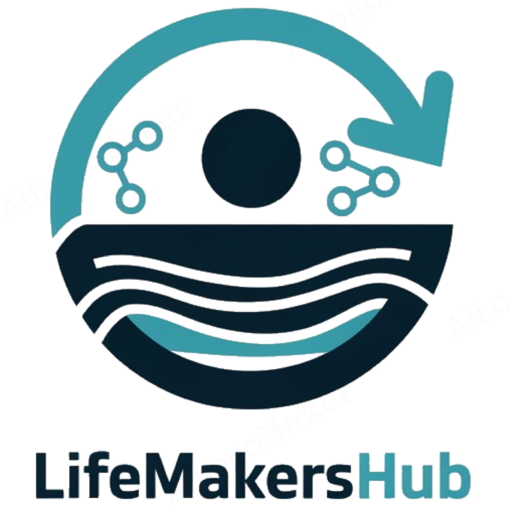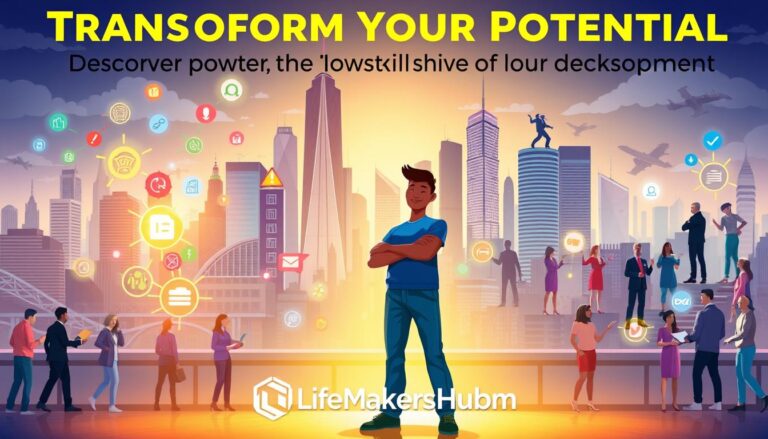Unlock the Power of Online Learning: Explore online learning Today
Welcome to our ultimate guide on online learning! Whether you’re a student, a professional, or simply someone eager to expand your knowledge, this guide is here to empower you with practical strategies to make the most of online learning.
From the early days of computer-based training to the rise of massive open online courses (MOOCs) and platforms like MIT OpenCourseWare, online learning has come a long way. The COVID-19 pandemic accelerated this transformation, making online education more accessible than ever. Today, millions of learners worldwide benefit from the flexibility and convenience that online learning offers.
Online learning provides a wide variety of courses, allowing you to study at your own pace, regardless of your location. This flexibility is particularly beneficial for those balancing work, family, and education. Moreover, online learning platforms offer tools and resources that can enhance your learning experience, from interactive videos to immediate feedback on assignments.
However, online learning also presents challenges, such as the need for self-discipline and the potential for limited face-to-face interaction. Despite these challenges, the advantages of online learning—such as cost savings, time efficiency, and access to a global community of learners—make it a powerful tool for personal and professional growth.
In this guide, we’ll explore both the technical and practical aspects of online learning, supported by industry data and expert advice. Whether you’re new to online learning or looking to refine your skills, this guide will provide you with actionable insights to succeed in the digital classroom.
Key Takeaways
- Online learning has evolved significantly, offering flexible and accessible education opportunities.
- Platforms like MOOCs and MIT OpenCourseWare provide high-quality educational resources.
- Online learning allows for self-paced study and can save time on commuting.
- Immediate feedback and access to course materials are key advantages of online learning.
- While challenges exist, the benefits of online learning make it a valuable tool for personal and professional development.
Defining Online Learning in the Digital Era
Online learning, also known as e-learning or digital learning, is the process of acquiring knowledge and skills through digital platforms. It has transformed the traditional classroom experience by offering flexibility and accessibility to students worldwide.
What is Online Learning?
Online learning involves using electronic devices and internet connectivity to access educational content. This can include video tutorials, online lectures, and discussion forums, making it a versatile method for modern education.
Key Characteristics and Modalities
Digital learning platforms provide various tools and resources to enhance the educational experience. For instance, Learning Management Systems (LMS) like Moodle allow institutions to deliver courses and track student progress effectively. Real-time instruction modes enable synchronous learning, where students can interact with instructors and peers in live sessions. Asynchronous modules, on the other hand, offer self-paced learning, allowing students to study at their convenience.
| Characteristic | Traditional Learning | Online Learning |
|---|---|---|
| Flexibility | Fixed schedules and locations | Study anytime, anywhere |
| Accessibility | Limited by location | Global reach, accessible to anyone with internet |
| Cost | High costs including commuting | Often more cost-effective, reducing commuting expenses |
| Interaction | Face-to-face interaction | Combination of synchronous and asynchronous interaction |
These characteristics highlight the advantages of online learning, making it a valuable tool for personal and professional growth. The adaptability of digital learning caters to different learning styles and needs, providing a comprehensive and engaging experience for all learners.
The Evolution and History of Online Learning
From humble beginnings to its current robust state, the history of online learning is a story of innovation and adaptation. Let’s explore the key milestones that have shaped this transformative educational approach.
Early Experiments and Milestones
The journey began in the 1960s with the PLATO system, one of the first computer-based education platforms. Institutions like the University of Phoenix and the Open University pioneered early distance learning models, laying the groundwork for modern online education.
The Internet Revolution and Technological Advancements
The advent of the World Wide Web in the 1990s revolutionized online learning. The launch of MIT’s OpenCourseWare in 2002 and the rise of MOOCs (Massive Open Online Courses) in the late 2000s made high-quality education accessible to millions. Platforms like Coursera and edX became synonymous with online learning, offering courses from top universities globally.
The COVID-19 pandemic further accelerated this shift, with educational institutions worldwide adopting remote learning solutions. Today, online learning continues to evolve with advancements in technology, ensuring that education remains accessible, flexible, and inclusive for all learners.
Benefits of Online Learning
Discover how online learning transforms education by offering flexibility, accessibility, and cost-effectiveness. These advantages empower learners to achieve their goals without compromising on quality.
Flexibility, Accessibility, and Cost-Effectiveness
Online learning breaks down geographical and scheduling barriers, offering unparalleled flexibility. Busy professionals can study at their convenience, with 70% of learners improving their time management skills. This flexibility is a game-changer for those balancing work and family life.
Cost-effectiveness is another significant advantage. Students save an estimated $10,000 annually by avoiding commuting, room, and board. Additionally, online learning is 50% more affordable than traditional education, making it a budget-friendly option.
Interactive resources and multimedia tools enhance the learning experience. Videos, interactive simulations, and real-time feedback make education engaging and effective. These tools help learners stay motivated and involved in their studies.
Global Reach and Personalized Learning
Online platforms connect learners worldwide, fostering cross-cultural interactions. This global reach is evident in the 40% increase in enrollment from rural areas, showcasing expanded accessibility. Learners engage with peers from diverse backgrounds, enriching their educational journey.
Personalized learning allows students to tailor their education to their needs. With self-paced courses, learners can focus on areas needing improvement. This approach, appreciated by 75% of online learners, enhances work-life balance and learning effectiveness.
These benefits make online learning a powerful tool for personal and professional growth. It’s an ideal choice for those seeking flexibility, accessibility, and affordability without sacrificing educational quality.

Navigating the Challenges of Online Learning
Every educational journey has its obstacles, and online learning is no exception. While it offers flexibility and convenience, it also presents unique challenges that can impact the learning experience. Understanding these challenges is the first step toward overcoming them.
Technical and Connectivity Hurdles
One of the most common issues learners face is technical difficulties. Unreliable internet connections and software glitches can disrupt the learning process. For instance, a poor internet connection can cause freezing during live sessions or make it difficult to submit assignments on time. Additionally, not all students have access to the necessary devices or software, creating a digital divide that can hinder their progress. Proper technical support and digital literacy training are essential to address these challenges effectively.
Addressing Social Isolation and Engagement Issues
Another significant challenge is the sense of isolation that can come with online learning. Without face-to-face interactions, students might feel disconnected from their peers and instructors. This isolation can lead to decreased motivation and engagement. To combat this, educators can foster a sense of community through online discussion groups, live video sessions, and collaborative projects. These strategies help students feel more connected and engaged in their learning environment.
| Challenge | Solution |
|---|---|
| Unreliable Internet | Ensure a stable connection and have a backup plan. |
| Software Glitches | Provide technical support and training. |
| Social Isolation | Foster community through online interactions. |
By understanding and addressing these challenges, learners and educators can create a more effective and engaging online learning experience. With the right strategies and support, online learning can continue to empower students worldwide.
Crafting a Dynamic Online Learning Environment
Creating an engaging online learning environment is key to fostering student success. By incorporating interactive tools and multimedia resources, educators can craft a space that captivates and inspires learners.
Leveraging Interactive Tools and Multimedia Resources
Interactive tools like live polling and video conferencing bring a classroom-like experience to the digital realm. These features encourage real-time interaction, making learners feel connected and involved. Multimedia resources, such as videos and simulations, add depth to lessons, helping students grasp complex concepts with ease.
Adaptive learning technologies tailor content to individual needs, ensuring each learner progresses at their own pace. This personalized approach enhances engagement and understanding, making the learning journey more effective and enjoyable.
| Feature | Traditional Classroom | Dynamic Online Environment |
|---|---|---|
| Interaction | Face-to-face discussions | Live polls, video conferencing, and virtual breakout rooms |
| Resources | Textbooks and whiteboards | Interactive videos, simulations, and adaptive learning tools |
| Flexibility | Fixed schedules | Self-paced learning with 24/7 access to materials |
Integrating these tools into existing platforms can seem daunting, but with clear strategies, educators can create a seamless experience. Start by identifying the most impactful tools for your course. Then, design a user-friendly interface that makes navigation intuitive. Finally, provide training and support to ensure both educators and students can use these tools effectively.

By focusing on interactivity and adaptability, educators can build a dynamic online learning environment that not only engages students but also fosters a deeper understanding of the material. This approach ensures that the online classroom is not just a substitute for traditional learning but a vibrant space that enhances the educational experience.
Effective Strategies for Online Course Success
Success in an online course requires more than just accessing materials—it demands intentional strategies to stay engaged and motivated. Whether you’re a seasoned learner or new to this format, adopting the right approaches can make a significant difference in your educational journey.
Implementing Best Practices in Curriculum Design
Start by setting clear goals and expectations. Create a structured schedule that balances study time with other responsibilities. Breaking tasks into smaller, manageable chunks can help maintain focus and reduce overwhelm. Additionally, engage actively with course materials—participating in discussions and seeking feedback from instructors can deepen your understanding and keep you connected to the learning community.
Ensuring Quality, Accreditation, and Student Support
Choose programs that are accredited and have a proven track record of success. Institutions with strong support services, such as academic advising and technical assistance, can provide the resources needed to thrive. Regularly review and update course content to ensure it remains relevant and aligned with your goals. Feedback from both peers and instructors is invaluable for continuous improvement.
By integrating these strategies, you can create a dynamic and effective learning experience that fosters growth and achievement.
Conclusion
As we conclude our journey through the transformative world of digital education, it’s clear that online learning has revolutionized how we acquire knowledge and skills. From its humble beginnings to its current robust state, this educational approach has come a long way, offering unparalleled flexibility and accessibility.
The benefits of online learning are undeniable. It breaks down geographical barriers, allowing students worldwide to access high-quality education. With the flexibility to study at their own pace, learners can balance work, family, and education seamlessly. Additionally, the cost-effectiveness of online courses makes education more accessible, saving students thousands of dollars on commuting and living expenses.
However, challenges such as technical difficulties and social isolation can hinder the learning experience. Addressing these issues requires strategic planning and support. By fostering a sense of community through interactive tools and multimedia resources, educators can create a dynamic and engaging online environment that enhances student success.
To ensure a successful online learning experience, it’s crucial to apply expert strategies shared throughout this guide. From setting clear goals and expectations to leveraging interactive tools, these approaches can help learners stay motivated and engaged. By embracing these strategies, educators and learners alike can unlock the full potential of digital education.
In closing, we encourage you to take the next step in your educational journey with confidence. Whether you’re a student, educator, or institution, embracing digital learning can lead to continuous improvement and growth. Remember, quality education is just a click away—empower yourself today and embrace the future of learning with open arms.
FAQ
What is online learning?
What are the advantages of online learning?
What are the challenges of online learning?
How can I stay motivated in an online course?
What tools are essential for online learning?
How does online learning differ from traditional classroom learning?
Can online learning be as effective as traditional classroom learning?
How can I choose the right online course for me?
What support services are available for online learners?
Source Links
- The 10 Benefits of Online Learning – School of Education – https://drexel.edu/soe/resources/student-teaching/advice/benefits-of-online-and-virtual-learning/
- 16 Benefits of Online Learning for Flexible Study | USAHS – https://www.usa.edu/blog/benefits-of-online-learning/
- What is Online Learning? Brief History, Benefits & Limitations – https://www.learnworlds.com/what-is-online-learning/
- Why the Future of Learning is Digital and for Everyone – https://www.ucf.edu/online/leadership-management/news/why-the-future-of-learning-is-digital-and-for-everyone/
- The Evolution of Online Learning: A Comprehensive Overview – https://www.qahe.org/article/the-evolution-of-online-learning-a-comprehensive-overview/
- The Evolution and History of eLearning – https://www.talentlms.com/ebook/elearning/history-of-elearning
- WVU Online | 10 Top Benefits of Online Learning for College Students – https://online.wvu.edu/blog/education/online-learning/10-top-benefits-of-online-learning-for-college-students
- Benefits of Online Learning: 8 Advantages of Online Degrees – https://graduate.northeastern.edu/knowledge-hub/benefits-of-online-learning/
- Challenges of Distance Learning for Students | National University – https://www.nu.edu/blog/challenges-of-distance-learning-for-students/
- Overcoming the 7 Challenges to Online Learning: Navigating the Path to Virtual Success – https://www.linkedin.com/pulse/overcoming-7-challenges-online-learning-navigating-path-virtual
- WVU Online | Top Challenges Online College Students Face and How To Cope – https://online.wvu.edu/blog/education/online-learning/top-challenges-online-college-students-face-and-how-to-cope
- Strategies for Online Learning: Engaging Effectively With Virtual Education – https://online.mason.wm.edu/blog/strategies-for-online-learning
- Creating Dynamic Engaging Online Learning Environments – https://ecampusontario.pressbooks.pub/aguideforbusyeducators/chapter/creating-dynamic-engaging-learning-environments/
- 10 Tips for Success in Online Classes | College of Education – https://www.usf.edu/education/about-us/news/2020/tips-success-online-classes.aspx
- 15 Tips to Succeed in an Online Class – https://online.umn.edu/story/15-tips-succeed-online-class
- What Is Online Learning? – https://elearningindustry.com/what-is-online-learning
- 5 Reasons Why Online Learning is the Future of Education in 2025 – https://www.educations.com/articles-and-advice/5-reasons-online-learning-is-future-of-education-17146
- The rise of online education and its impact on traditional learning institutions – https://timesofindia.indiatimes.com/readersblog/ecommercetrends/the-rise-of-online-education-and-its-impact-on-traditional-learning-institutions-52621/







